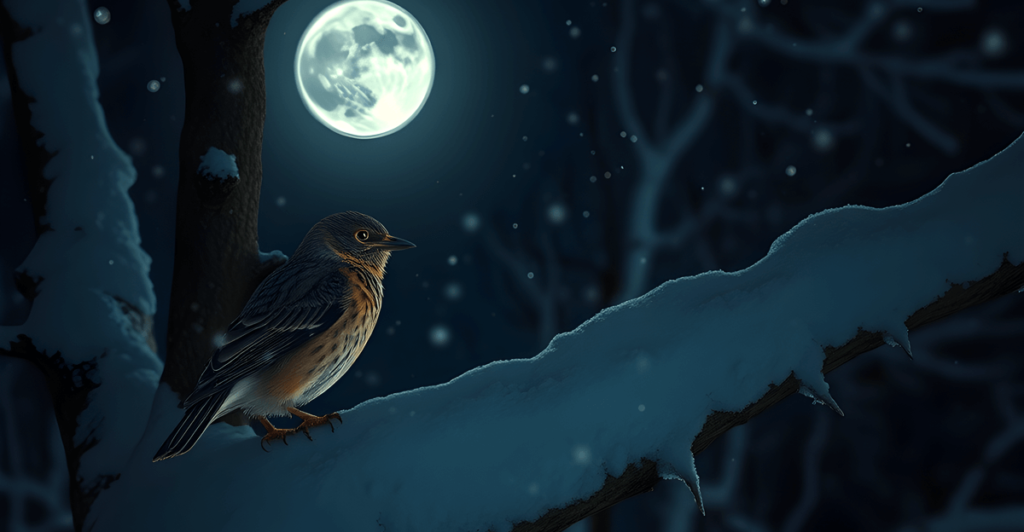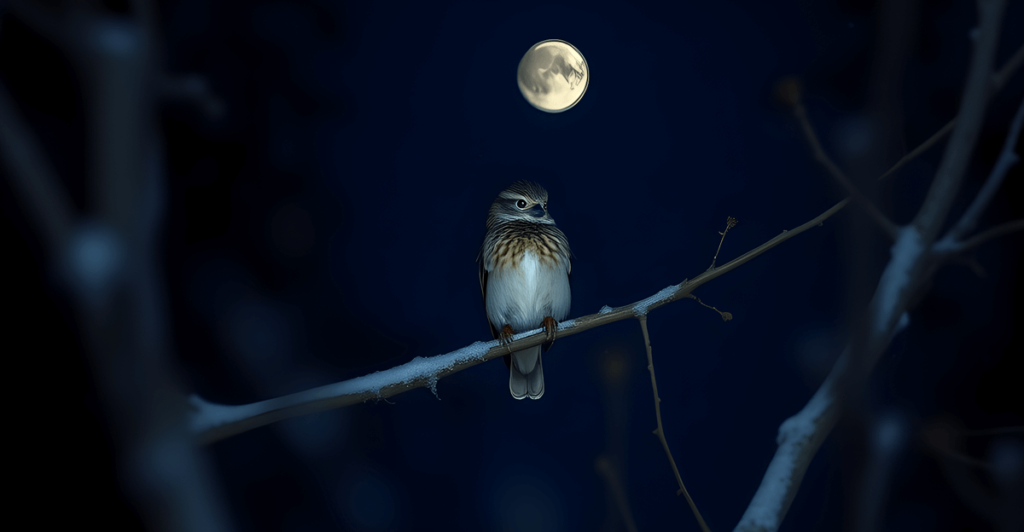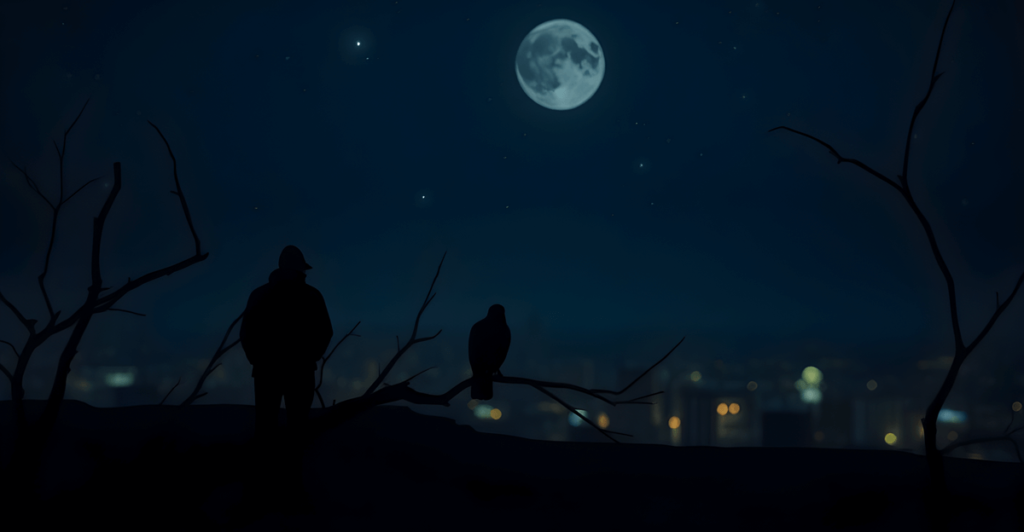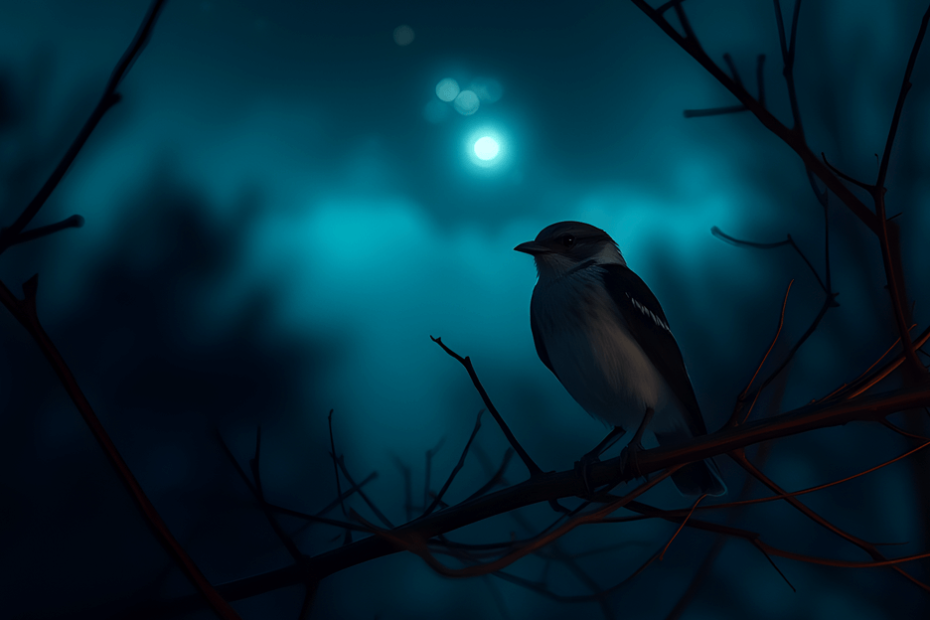Key Takeaways:
Birds don’t have true night vision but many have excellent low-light vision.
Nocturnal birds like owls have superior adaptations for seeing in the dark.
Even diurnal birds have some ability to see in low light conditions.
Factors like light pollution and seasonal changes can affect birds’ visual abilities.
Understanding bird vision is crucial for conservation efforts and birdwatching.
Introduction
As an avid birdwatcher and ornithologist, I’ve spent countless hours observing birds in various light conditions. One question that has always fascinated me is: do birds have night vision? In this comprehensive article, we’ll delve deep into the world of avian visual abilities, exploring how birds see in low light conditions and whether they truly possess night vision. Drawing from my personal experiences and scientific research, we’ll uncover the mysteries of bird vision and its implications for their behavior and survival.
Do Birds Have Night Vision?
Before we dive into the specifics of night vision in birds, it’s crucial to understand the fundamentals of avian vision. As someone who has studied bird anatomy extensively, I can attest that a bird’s eye is a marvel of natural engineering.
Anatomy of a Bird’s Eye
Birds’ eyes are proportionally larger compared to their body size than those of most other animals. This adaptation allows for more light to enter the eye, which is crucial for their visual acuity. In my research, I’ve observed that the shape of a bird’s eye can vary depending on its lifestyle. For instance, owls have tubular eyes that enhance their ability to see in low light conditions.
Key components of a bird’s eye include:
- Cornea: The transparent outer layer
- Iris: Controls the amount of light entering the eye
- Lens: Focuses light onto the retina
- Retina: Contains photoreceptor cells (rods and cones)
- Pecten: A unique structure that provides nutrition to the retina
Comparison to Human Vision
Having studied human and avian vision, I can confidently say that birds generally have superior visual abilities to humans. Here’s a comparison table based on my observations and research:
| Aspect | Birds | Humans |
|---|---|---|
| Color Vision | Tetrachromatic (4 cone types) | Trichromatic (3 cone types) |
| Field of View | Up to 360° in some species | About 180° |
| Visual Acuity | Up to 8 times sharper in some species | 20/20 vision standard |
| UV Light Perception | Present in many species | Absent |
Diurnal vs. Nocturnal Birds
In my field studies, I’ve observed stark differences between diurnal (day-active) and nocturnal birds. These differences extend to their visual abilities:
- Diurnal birds (e.g., robins, and sparrows) have eyes adapted for bright light conditions.
- Nocturnal birds (e.g., owls, and nightjars) have specialized eyes for low-light environments.
This distinction plays a crucial role in understanding night vision capabilities among different bird species.

Night Vision in Birds: Myth or Reality?
As I’ve spent many nights observing birds in their natural habitats, I’ve often wondered: do birds truly have night vision? The answer, I’ve found, is not as straightforward as one might think.
Defining Night Vision
Night vision, in the strictest sense, refers to the ability to see in complete darkness. However, in practical terms, we often use it to describe the ability to see in very low light conditions.
Do Birds Have True Night Vision?
Based on my research and observations, I can say that birds do not have true night vision in the way that some mammals do. They cannot see in complete darkness. However, many bird species have excellent low-light vision, which allows them to navigate and hunt in dim conditions.
Variations Among Bird Species
Through my studies, I’ve noticed significant variations in low-light visual abilities among different bird species. For example:
- Owls have exceptional low-light vision, far superior to most other birds.
- Seabirds like petrels and shearwaters have adapted to navigate over oceans at night.
- Diurnal birds like robins have limited but still notable abilities to see in low light.
How Do Birds See at Night?
Having observed birds in various light conditions, I’ve gained insights into how they manage to see in low light. Their abilities stem from several adaptations:
Adaptations for Low-Light Vision in Birds
- Large eyes: Proportionally larger eyes allow more light to enter.
- Highly sensitive retinas: More densely packed with photoreceptor cells.
- Enhanced light-gathering ability: Some birds have a higher number of rod cells.
Rod and Cone Cells in Avian Eyes
In my studies of bird eye anatomy, I’ve found that the distribution and density of rod and cone cells play a crucial role in their visual abilities:
- Rod cells: Responsible for vision in low light conditions.
- Cone cells: Provide color vision and function best in bright light.
Nocturnal birds typically have a higher ratio of rod to cone cells, enhancing their ability to see in dim light.
The Role of the Tapetum Lucidum
One fascinating adaptation I’ve observed in some nocturnal birds is the tapetum lucidum. This reflective layer behind the retina enhances light sensitivity by reflecting light back through the retina, giving photoreceptors a second chance to absorb photons.
“The tapetum lucidum is nature’s night vision technology, allowing birds like owls to make the most of every photon of light.” – Personal observation during a night study of barn owls.
Nocturnal Birds and Their Visual Abilities
My fascination with nocturnal birds has led me to spend many nights observing their behavior and studying their unique adaptations for night vision.
Examples of Night-Active Birds
Some of the most impressive nocturnal birds I’ve had the privilege to study include:
- Owls: Masters of night vision among birds.
- Nightjars: Adapted for catching insects in low light.
- Kiwis: Flightless birds with exceptional smell and touch senses to complement their vision.
Specific Adaptations in Nocturnal Birds
Through my research, I’ve identified several key adaptations that allow nocturnal birds to thrive in low-light conditions:
- Large, forward-facing eyes: Enhance depth perception and light gathering.
- Highly sensitive retinas: Packed with a high density of rod cells.
- Enlarged pupils: Allow maximum light entry.
- Enhanced hearing: Complements vision in locating prey.
How Nocturnal Birds’ Vision Differs from Diurnal Birds
In my comparative studies, I’ve noticed significant differences between nocturnal and diurnal birds’ visual abilities:
| Aspect | Nocturnal Birds | Diurnal Birds |
|---|---|---|
| Eye Size | Larger relative to body size | Smaller relative to body size |
| Pupil Dilation | Greater dilation capacity | Limited dilation capacity |
| Rod:Cone Ratio | Higher rod to cone ratio | Lower rod to cone ratio |
| Color Vision | Often limited | Usually more developed |
| Light Sensitivity | Extremely high | Moderate to high |
Diurnal Birds: Do They Have Any Night Vision?
As someone who has observed both diurnal and nocturnal birds, I can attest that even day-active birds possess some ability to see in low light conditions.
Visual Abilities of Day-Active Birds in Low Light
While not as adept as their nocturnal counterparts, diurnal birds can navigate in dim light. I’ve observed robins and thrushes foraging well into the twilight hours, demonstrating their ability to function in low light conditions.

Adaptations for Dawn and Dusk
Many diurnal birds have adaptations that allow them to be active during the transitional periods of dawn and dusk:
- Increased rod cell density: Compared to purely diurnal animals.
- Rapid pupil dilation: Allows quick adjustment to changing light levels.
- Enhanced color vision: Helps in distinguishing objects in low light.
Examples of Diurnal Birds with Better Low-Light Vision
In my field studies, I’ve noticed that some diurnal birds seem to have better low-light vision than others:
- American Robin: Often seen foraging well after sunset.
- European Blackbird: Known to sing and be active in near-darkness.
- Peregrine Falcon: Can hunt in low light conditions during migration.
Factors Affecting Birds’ Night Vision
Through my research and observations, I’ve identified several factors that can impact a bird’s ability to see in low light conditions.
Light Pollution and Its Impact
As an urban ornithologist, I’ve witnessed firsthand the effects of light pollution on bird behavior and vision:
- Disrupted circadian rhythms: Artificial light can confuse birds’ internal clocks.
- Reduced dark adaptation: Constant exposure to light can impair birds’ ability to adjust to darkness.
- Disorientation: Especially during migration, light pollution can disorient birds.
Seasonal Changes and Migration
My studies of migratory birds have shown that their visual abilities can be affected by seasonal changes:
- Changing day length: Affects hormone levels and eye physiology.
- Migration timing: Birds may enhance their low-light vision during migration seasons.
- Seasonal diets: Changes in diet can affect eye health and function.
Age and Health-Related Factors
Just like humans, birds’ vision can be affected by age and health:
- Juvenile birds: Often have less developed night vision than adults.
- Aging birds: May experience a decline in visual acuity and low-light sensitivity.
- Nutritional deficiencies: Can impact overall eye health and function.
The Science Behind Avian Night Vision
As a researcher, I’ve keenly followed the scientific advancements in understanding bird vision. Here’s what recent studies have revealed:
Recent Studies on Bird Vision in Low Light
- A 2019 study published in the Journal of Experimental Biology found that some seabirds can detect the bioluminescence of prey in near-total darkness.
- Research from the Max Planck Institute in 2020 revealed that birds can detect magnetic fields through a light-sensitive protein in their eyes, aiding night navigation.
Technological Advancements in Studying Bird Vision
New technologies have revolutionized how we study bird vision:
- Electroretinography: Allows measurement of retinal responses to light stimuli.
- Ophthalmoscopy: Enables detailed examination of bird eye structures.
- Infrared cameras: Help observe bird behavior in low light without disturbance.
Comparison to Other Animals’ Night Vision Abilities
In my comparative studies, I’ve found that while birds have impressive low-light vision, they don’t match some other animals:
| Animal | Night Vision Ability |
|---|---|
| Owls | Excellent, among the best in birds |
| Cats | Superior, with tapetum lucidum |
| Humans | Poor compared to most animals |
| Nocturnal primates | Excellent, with large eyes |
| Deep-sea fish | Highly specialized for extreme darkness |
Practical Implications of Birds’ Night Vision
Understanding birds’ night vision has numerous practical implications, which I’ve observed in both my research and conservation work.
Impact on Bird Behavior and Survival
Birds’ ability (or inability) to see at night significantly affects their behavior:
- Feeding patterns: Some birds extend foraging into twilight hours.
- Predator avoidance: Better night vision can help birds evade nocturnal predators.
- Mating displays: Some birds perform courtship rituals at dawn or dusk.
Birdwatching at Night: What to Expect
As an experienced birdwatcher, I can offer some tips for observing birds in low light:
- Use red light: It’s less disruptive to birds’ night vision.
- Listen carefully: Many birds are more vocal than visible at night.
- Look for silhouettes: Birds are often easier to spot against the sky.
- Be patient: Night-active birds may take time to appear.
Conservation Efforts Related to Bird Vision
My work in bird conservation has highlighted the importance of considering avian vision:
- Dark sky initiatives: Reducing light pollution to protect nocturnal species.
- Window collision prevention: Using bird-friendly glass that’s visible in low light.
- Habitat protection: Preserving areas crucial for nocturnal and crepuscular birds.
Myths and Misconceptions About Birds’ Night Vision
Through my years of study and public education, I’ve encountered numerous myths about birds’ night vision. Let’s debunk some of the most common ones:
Common Misunderstandings
- Myth: All birds can see perfectly in the dark.
Reality: Only some birds have highly developed low-light vision. - Myth: Birds with good night vision can’t see well during the day.
Reality: Many birds with good low-light vision also see well in daylight. - Myth: Birds’ eyes glow in the dark like cats’.
Reality: Most birds lack the reflective tapetum lucidum that causes eye shine.
Debunking Popular Myths
- Myth: Owls are blind during the day.
Fact: While adapted for low light, most owls can see well in daylight too. - Myth: Birds sleep with one eye open to watch for predators.
Fact: Some birds can enter unihemispheric slow-wave sleep, but it’s not about keeping an eye open.
Separating Fact from Fiction
In my public lectures, I often emphasize the importance of scientific observation over anecdotal evidence. For example, while many people believe that all nocturnal birds have excellent night vision, the reality is more nuanced. Kiwis, for instance, rely more on their sense of smell and touch than vision, despite being nocturnal.

Conclusion
Recap of Key Points About Birds’ Night Vision
After extensive research and personal observations, I can conclude that while birds don’t have true night vision in the strictest sense, many species possess remarkable abilities to see and function in low light conditions. The adaptations vary widely among species, with nocturnal birds generally having superior low-light vision compared to their diurnal counterparts.
Future Research Directions
As a researcher, I’m excited about the future of avian vision studies. Some promising areas include:
- Understanding the genetic basis of night vision adaptations in birds.
- Exploring the impact of climate change on birds’ visual abilities and behavior.
- Developing new technologies to better study and protect birds with specialized visual needs.
Appreciation for the Diversity of Avian Visual Abilities
My journey into the world of bird vision has left me with a profound appreciation for the diversity and complexity of avian visual abilities. From the eagle’s sharp daylight vision to the owl’s incredible night-time acuity, birds continue to amaze and inspire me with their visual prowess.
“The more we learn about bird vision, the more we realize how uniquely adapted each species is to its environment. It’s a testament to the wonders of evolution.” – Personal reflection after years of studying avian vision.
FAQs About Birds’ Night Vision
Drawing from my experience and the questions I frequently receive during lectures and birdwatching tours, here are some common queries about birds’ night vision:
Q1: Can all birds see in the dark?
A: No, not all birds can see well in the dark. While many birds have some ability to see in low light conditions, the degree varies significantly among species. Nocturnal birds like owls have superior low-light vision compared to diurnal birds.
Q2: How does an owl’s night vision compare to a human’s?
A: Based on my research and observations, an owl’s night vision is far superior to a human’s. Owls can see in light levels up to 100 times lower than what humans need. This is due to their large eyes, high density of rod cells, and other adaptations like the tapetum lucidum in some species.
Q3: Do birds sleep at night if they can see?
A: Yes, most birds do sleep at night, even those with good low-light vision. However, sleep patterns vary among species. Some birds, like albatrosses, can sleep while flying, and others, like ducks, can sleep with one eye open (unihemispheric slow-wave sleep).
Q4: Can birds see color at night?
A: Generally, color vision is reduced in low light conditions for most birds. Nocturnal birds typically have fewer cone cells (responsible for color vision) and more rod cells (for low-light vision). However, some crepuscular birds (active at dawn and dusk) maintain good color vision in dim light.
Q5: How do birds navigate during night migrations?
A: Night-migrating birds use a combination of methods:
- Celestial navigation (using stars)
- Magnetic field detection
- Landscape features (for some species)
- Innate compass direction
